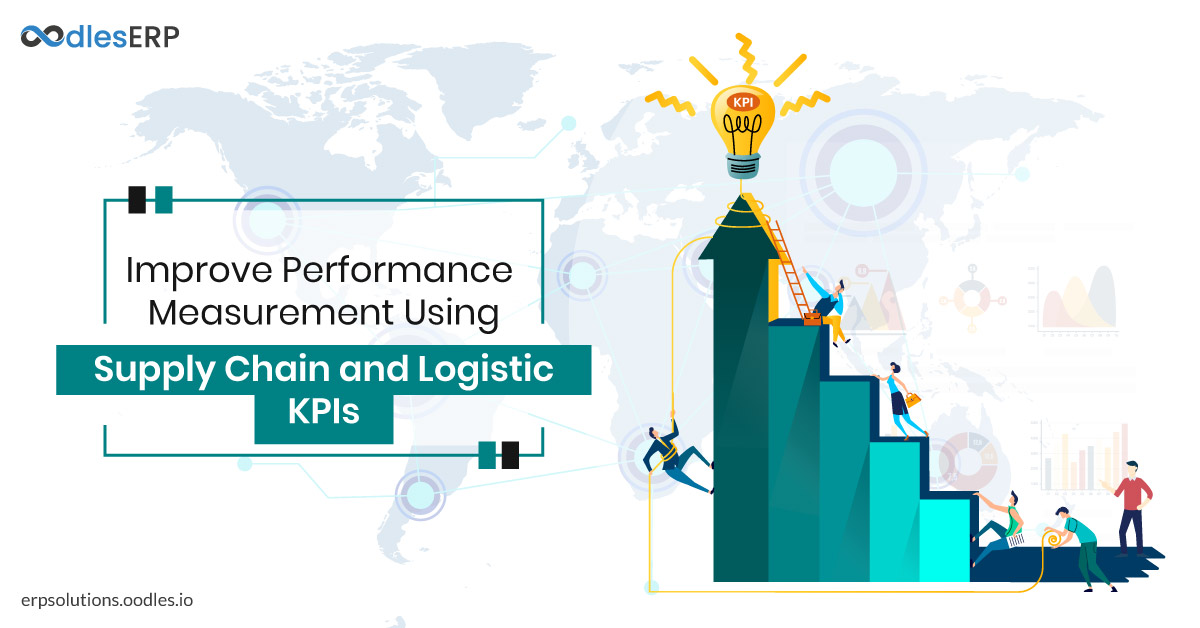An efficient supply chain management system (SCM) is essential for businesses whose success depends on the swift and timely movement of goods. It exerts better control over the flow of goods from point-of-origin to point-of-sale. According to a Deloitte study, 79% of companies with high performing supply chains earn more revenue than the average within their sector. However, supply chain stakeholders need continuous improvement measures such as vessel management software to compete in the marketplace. It underscores the importance of measuring supply chain and logistics KPIs.
A Key Performance Indicator (KPI) is a practical and objective measurement of progress towards a predetermined goal. Mapping supply chain and logistic KPIs against industry benchmarks enhance SCM performance visibility and lead to necessary improvements. SCM performance measurement includes production, inventory, procurement, warehousing, transportation, packaging and customer service metrics.
Key Supply Chain and Logistics KPIs

Shipping Time:
Shipping time is a logistic KPI that enables organizations to measure supply chain performance. It is a performance metric that is a ratio of orders that have been shipped before the requested ship date divided by the total number of orders. It lets the organization set a benchmark shipping time relative to each product. To support faster fulfillment and greater control over outbound logistics, many businesses adopt container-based shipping methods that allow for better planning, standardized handling, and scalable transport solutions. This approach can significantly reduce delays caused by inconsistent packaging or inefficient loading practices. This way organizations can optimize shipping and delivery processes, thus reducing the turnover time. Additionally, it enhances customer satisfaction levels.
Order Accuracy:
Order Accuracy is an important logistics KPI for measuring supply chain efficiency. It measures the number of orders that are processed, shipped and delivered without any incidents during the process.
Order accuracy is critical for the business as it shows the efficiency of supply chain and delivery services. It leads to satisfied and loyal customers who eventually can become brand advocates. Additionally, it enables the organization to eliminate issues such as inaccuracies, delays, damages and inventory losses.
Higher order accuracy is better for the organization as this KPI has a direct impact on customer retention and loyalty levels.
Cash-to-Cash Time Cycle:

Supply Chain and Logistics KPIs
Cash-to-Cash Time Cycle is a supply chain metric that enables organizations to calculate the length of time required to transform resources into revenue streams. This KPI works with three core ratios- Days of Inventory (DOI), Days of Receivables (DOR) and Days of Payables (DOP).
This KPI visualizes the period required from the time a business pays cash to its suppliers until it receives cash from customers. Shorter conversion cycle is better for the organization as it enables organizations to run the business with less money invested in operations.
Gross Margin Return on Investment (GMROI):
Return on Investment (ROI) determines the success of a business. In supply chain metrics, GMROI provides a clear representation of a seller’s return on every unit of currency spent on inventory. With GMROI, organizations can easily gain insights into which items in the inventory are poor performers and which items are worth investing.
Inventory Turnover:
Inventory turnover is one of the most beneficial supply-chain KPIs for organizations to understand the number of times their inventory is sold over a certain time period of time. It is an indicator of efficient process strategy, production planning, marketing, and sales management. This supply chain KPI enables organizations to create a clear management reporting practice which results in increased brand authority.
Days Sales Outstanding (DSO):
DSO is a KPI that measures how swiftly an organization is able to collect or generate revenue from its customers. A low DSO number indicates that businesses only require a few days to collect its accounts receivable. A higher DSO level indicates that an organization is selling its product to customers on credit. It signifies organizations takes longer to collect revenue, which in turn can reduce profits. Calculating DSO is essential for companies to accelerate their revenue collection processes
Return Reason:
Return reason is a supply chain metric that provides organizations insights into the reasons why customers return their products. It is an important indicator of the success of an e-commerce business.

Supply Chain and Logistics KPIs
The pie chart above shows the primary reasons for product returns. Organizations can analyze their areas of weakness, analyze the quality of their supply chain processes and make improvements to enhance the overall level of service significantly.
Freight Bill Accuracy:
Billing accuracy is also critical for achieving profitability and customer satisfaction. Tracking this particular metric enable organizations to improve shipping accuracy by avoiding incorrect pricing, weight discrepancies, and incomplete shipping information.
Here is a formula to calculate freight bill accuracy:
(error freight bills/ total freight bills) *100
Avail Benefits of Supply Chain and Logistics with Oodles ERP
We provide end-to-end customized supply chain software development services for better supply chain planning and execution. We have experience in developing supply chain solutions like order management system, asset tracking, inventory management, shipping solution and supply chain KPIs.
Our professionals resolve all shipping software issues from estimating freight quotes to the integration with UPS and FedEx.
We have experience in developing logistics software solutions for cost-efficient distribution and timely deliveries. Our professionals also integrate separate logistic modules into existing Enterprise Resource Planning (ERP) and Warehouse Management Systems (WMS).
Our experienced team specializes in developing fleet management solutions that simplify freight operations, reduce costs and boosts customer service.
Concluding Thoughts
Supply chain and logistics KPIs are used by logistics managers to visualize, track and optimize relevant logistic processes in an efficient manner. Tracking supply chain and logistics KPIs is important to minimize errors, improve revenues, and enhances customer satisfaction. It reveals if the required performance standards are met and if improvements are necessary or if it is time to raise the standards.
0 Comment(s)